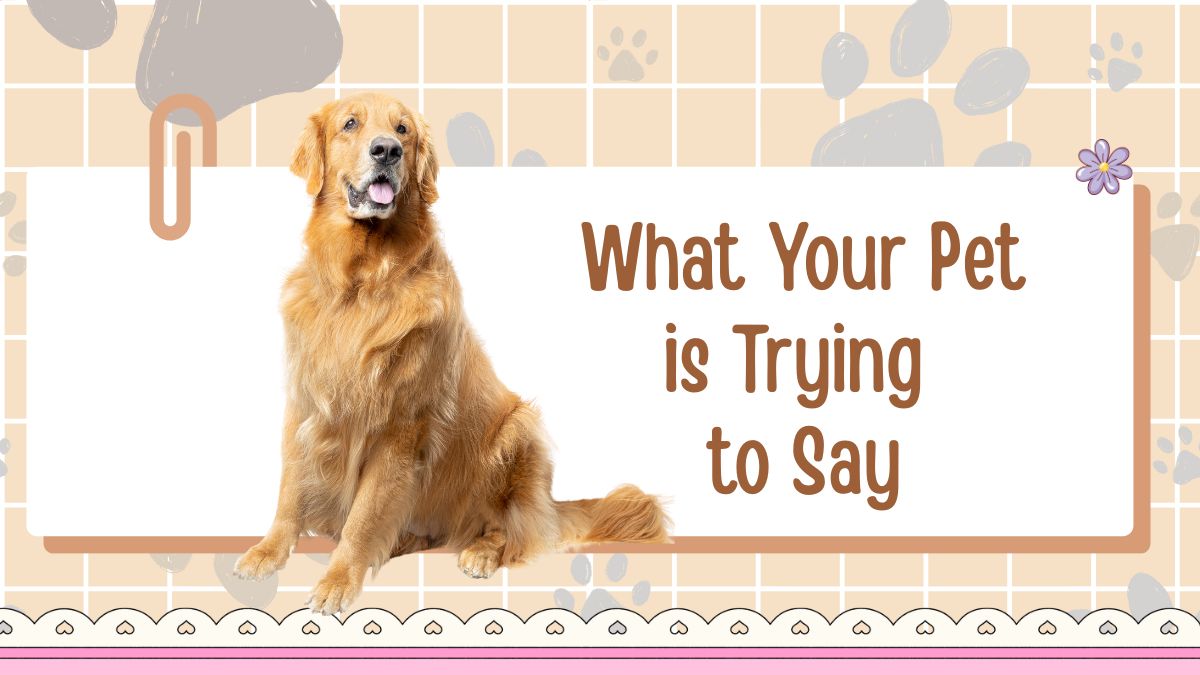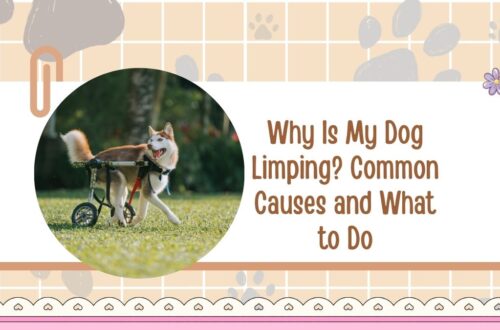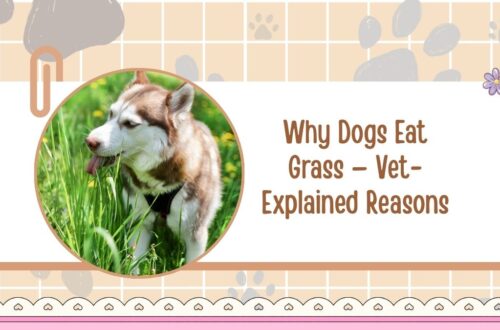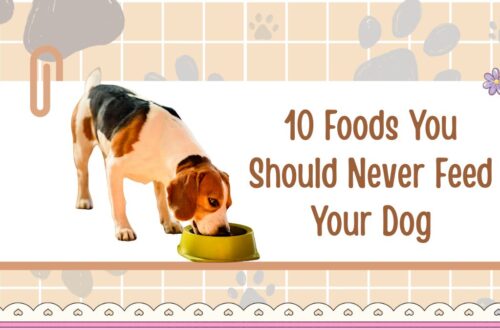Your pet is talking all day—just not with words. Animals rely on posture, tail and ear position, facial tension, pupil size, whiskers, breathing, and movement speed to signal comfort, stress, curiosity, fear, or pain.
Learning pet body language helps you prevent bites and scratches, ease anxiety, and catch health problems earlier.
This guide translates the latest consensus from veterinarians and behaviorists into practical, context-first interpretations for dogs, cats, and other small pets.
Why Body Language Matters More Than “Good” Or “Bad” Behavior
- Behavior is communication. A growl or hiss is information, not a “naughty” act. Punishing warning signals can suppress them and increase risk.
- Context changes meaning. A dog tail wag can mean arousal or uncertainty, not just happiness. A cat purr can accompany stress or pain as well as contentment.
- Early intervention works. Subtle stress signals—lip licks, yawns, tucked tail, slow blink—appear before escalation (snaps, swats, or bites).
The Golden Rules Of Pet Body Language
- Look at the whole animal, not one part. Tail + ears + eyes + mouth + posture + movement speed.
- Consider the environment. New people, tight spaces, loud sounds, resource competition, or pain alter signals.
- Watch for change from baseline. “Normal” varies by individual; compare today to your pet’s usual.
- Slow is safe. Slow blinks, slow tail swishes, relaxed breathing generally = calmer states.
- When unsure, create distance. Increase space, avoid leaning over, and let the pet choose to approach.
Dog Body Language: From “Hello” To “I Need Space”
Tail
- Neutral/level, soft sway: Relaxed, approachable.
- Fast, high wag with stiff base: High arousal; may be friendly or intense—slow interactions.
- Low tuck under belly: Fear, discomfort, pain, or cold.
- Slow, low wag to one side with lowered head: Uncertain, appeasing.
Ears
- Neutral, gently mobile: Comfortable and curious.
- Pinned back and flat: Fear, appeasement; pair with tucked tail or lip licking.
- Forward and stiff: Focused or potentially agitated; assess context (play vs. guarding).
Eyes & Face
- Soft eyelids, normal pupils: Relaxed.
- Whale eye (visible sclera), darting gaze, dilated pupils: Stress or guarding.
- Lip licking (without food), yawning, paw lift: Calming signals or stress.
Mouth & Vocalization
- Open, soft pant, loose tongue: Comfortable.
- Closed mouth, tight commissures, “smile” with tension: Arousal or discomfort.
- Low growl, rumble, or freeze: Respect the warning; create space.
Posture & Movement
- Loose, wiggly body; curved approach: Friendly.
- Weight shifted forward, stiff legs: Possible challenge or intense focus.
- Crouch with tail tuck: Fearful; avoid looming or reaching over head.
Myth check: A wagging tail ≠ happiness. Prioritize the base of the tail (stiff vs. loose) and the rest of the body.
Cat Body Language: The Subtle Art Of “Maybe”
Tail
- Upright with soft tip curl: Confident greeting.
- Puffed bottle-brush, low or tucked: Fear/defense; increase distance.
- Rapid tip twitching: Irritation or intense focus (often a pre-swat warning).
- Slow, sweeping swish: Mild arousal or assessing mood.
Ears
- Forward, swiveling: Curious and engaged.
- Sideways “airplane” or flat back: Overstimulated or anxious; stop petting and offer space.
Eyes & Face
- Slow blink: Trust and relaxation; you can slow-blink back.
- Wide eyes, big pupils, fixed stare: Stress, hunting focus, or fear—do not corner.
- Whiskers forward: Interest/hunting; whiskers flattened back: fear/avoidance.
Body & Vocalization
- Loaf, exposed belly with relaxed body: Secure (not always an invitation to touch).
- Arched back, sideways stance, piloerection: Defensive display—back off.
- Purr: Can indicate contentment or pain/anxiety; read the rest of the body.
Myth check: Belly showing ≠ belly rub request. Many cats display trust while still disliking belly contact.
Small Pets & Birds: Key Signals You Shouldn’t Miss
- Rabbits: Relaxed flop, stretched sprawl = calm. Tooth purr (gentle grinding) = content; loud grinding + hunched posture = pain. Rapid breathing, head down, narrowed eyes = fear or illness—seek veterinary advice.
- Guinea pigs: Popcorning (bouncy jumps) = joy; teeth chattering + lifted chin = agitation.
- Parrots: Feathers sleeked with bright eyes = alert/curious; fluffed for a long time + lethargy = illness; pinning pupils and fanned tail = arousal (can precede a bite).
Quick-Reference Table: Common Signals And What To Do
| Species | Signal | Likely Meaning | Your Best Response |
|---|---|---|---|
| Dog | Loose, wiggly body; soft wag | Relaxed, social | Greet calmly; offer hand to sniff; reward gentle behavior |
| Dog | Whale eye + stiff posture | Stress/guarding | Pause interaction; create space; trade up if guarding an item |
| Dog | Lip licking, yawning (no food) | Mild stress/calming | Slow down; turn sideways; avoid reaching over head |
| Dog | Tail tucked + crouch | Fear/pain | Do not force contact; provide escape route; consult vet if persistent |
| Cat | Tail up, slow blink | Confident, friendly | Slow blink back; offer finger for cheek rub |
| Cat | Ears sideways/flat + rapid tail tip | Overstimulated | Stop petting; give space; play with wand toy later |
| Cat | Puffed tail, arched back | Defensive fear | Back away; avoid eye contact; allow retreat |
| Rabbit | Hunched, loud tooth grinding | Pain/distress | Seek veterinary care promptly |
| Guinea Pig | Teeth chattering | Irritation | Separate pigs; reduce stressors; handle later |
| Parrot | Pupil pinning + tail fan | High arousal | Pause handling; redirect to perch; resume when feathers relax |
Reading Common Situations
1) Greeting New People
- Dogs: Ask for a hand presented low and to the side; avoid leaning over. Look for curved approaches and loose bodies before petting.
- Cats: Let them come to you; offer a finger at nose level for a cheek scent rub. Avoid direct staring.
2) Play Versus Tension
- Dogs at play: Play bow, bouncy movements, self-handicapping, role reversals. If motions turn stiff, wags get high and tight, or one dog stops reciprocating, call a break.
- Cats at play: Sideways hops, chasing toys, soft ears forward. If tail tip twitches fast or ears go airplane, stop before a swat.
3) Handling & Petting
- Petting preference: Most pets prefer chest, shoulders, and base of neck; many dislike top-down hand approaches and face/limb grabs.
- Consent test: Pet 3–5 seconds, stop, and watch—do they nudge back or leave?
4) Resource Guarding (Food/Toys/Space)
- Early signs: Freezing, hovering over item, sideways glance (whale eye), low growl.
- Do: Trade the item for a higher-value treat; practice “give” with rewards; manage environment.
- Don’t: Grab or chase; punishment increases guarding.
5) Stress & Pain Clues You Can Track
- Dogs: New restlessness, reluctance to jump, panting at rest, persistent lip licking, changes in tail carriage.
- Cats: Hiding, reduced grooming or over-grooming one spot, squinting, reduced jumping, missed litter box.
- Small pets: Decreased appetite, unusual stillness, posture changes. Behavior change is often the first clinical sign—book a vet exam.
How To Help Your Pet Feel Safe (And Communicate Back)
- Give choice and control. Provide elevated perches (cats), escape routes (dogs/cats), and quiet zones (small pets).
- Predictability lowers arousal. Keep routines for meals, play, and rest.
- Use cooperative care. Teach start-button behaviors (e.g., dog rests chin on towel to “opt-in” for nail trims) and pause if they lift their head.
- Enrich daily. Sniff walks, puzzle feeders, vertical space, shreddable bird toys—enrichment reduces stress behaviors.
- Train with positive reinforcement. Pair scary things with treats at a distance where your pet stays relaxed.
Evidence-Based Myths To Retire
- “Alpha rolls” or dominance tactics: Increase fear and aggression risk; use reward-based training.
- “Tail wag = happy”: It indicates arousal, which can be friendly, conflicted, or tense—read the whole dog.
- “Purring = always happy”: Cats also purr when anxious or in pain.
- “He knows he’s guilty”: The “guilty look” is appeasement in response to your tone/posture, not proof of understanding wrongdoing.
Step-By-Step: Turning Signals Into Action
- Pause & scan: Tail base, ear set, eyes, mouth tension, posture.
- Check context: New person? New place? Resource present?
- Measure intensity: Loose/soft vs. stiff/fast; dilated pupils; breathing rate.
- Adjust: Add distance, lower your body sideways, speak softly, toss treats away from pressure.
- Reassess: If signals soften (slow blinks, loose posture), proceed; if they escalate, stop and try later.
When To Call A Professional
- Reactivity, aggression, or sudden behavior change warrants a veterinary exam to rule out medical causes (pain, thyroid disease, dental issues).
- For training/behavior plans, look for reward-based practitioners and veterinarians with advanced behavior credentials.
Animals communicate clearly when we know what to watch for. By reading whole-body signals in context, respecting early warnings, and offering choice and positive experiences, you’ll reduce fear, prevent injuries, and deepen trust.
Make observation a habit—five seconds to scan tail, ears, eyes, mouth, posture, and movement—then adjust your approach. That small pause is the fastest way to a calmer, happier life with your pet.
FAQs
A wag signals arousal, not guaranteed friendliness. If the body is stiff, tail high and tight, pupils large, or the dog feels cornered, a snap can follow. Slow the greeting, turn sideways, and give space. Build positive associations with controlled exposures and rewards.
Purring can self-soothe during stress or pain. Combine purring with other signs: dilated pupils, crouched posture, tail tucked, and fast breathing indicate fear. Use a towel-covered carrier, pheromone wipes, and minimal handling to help.
Dogs: lip licks, yawns, shake-offs, pinned ears, half-moon eyes, turning head away. Cats: airplane ears, rapid tail tip, skin ripples, stop-and-stare. Small pets: freezing or sudden stillness. End the session and let them retreat.






